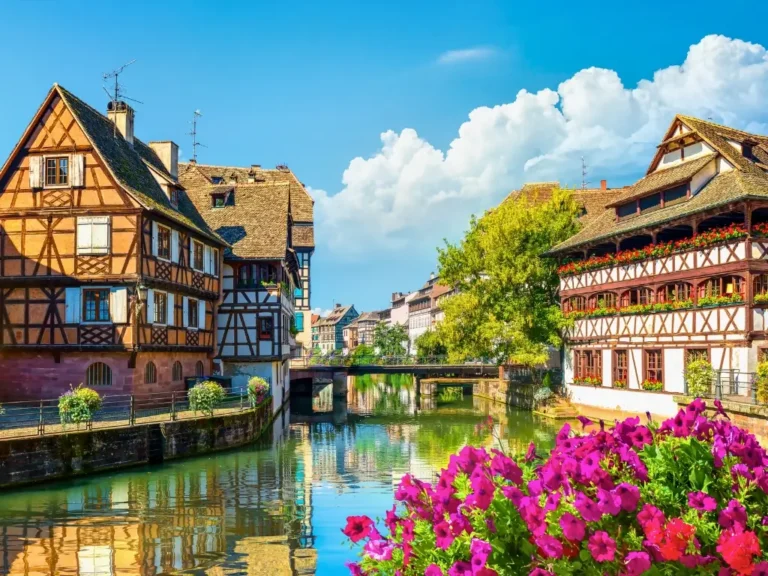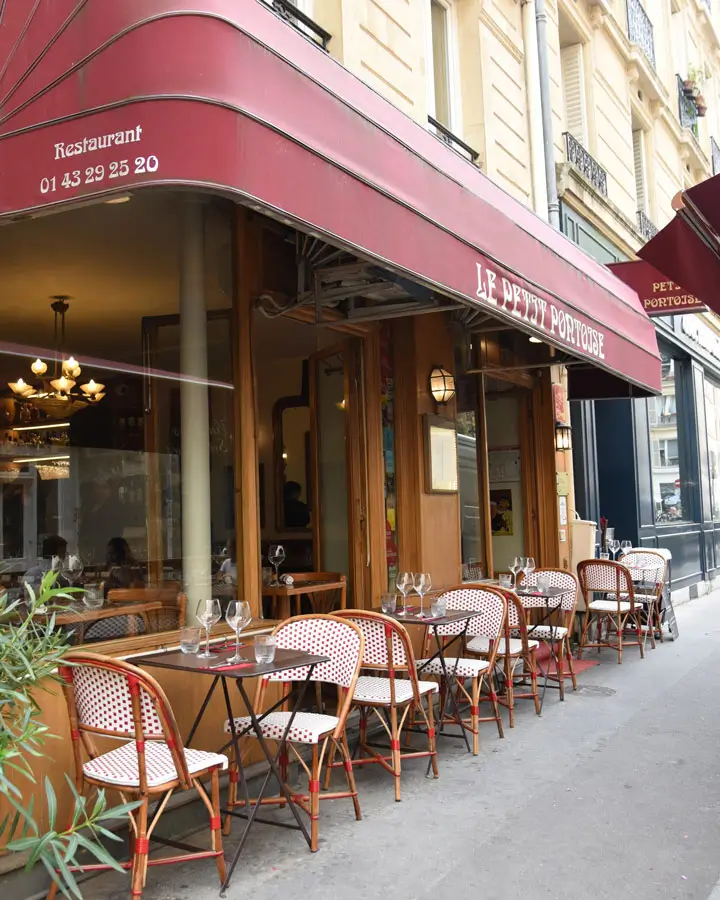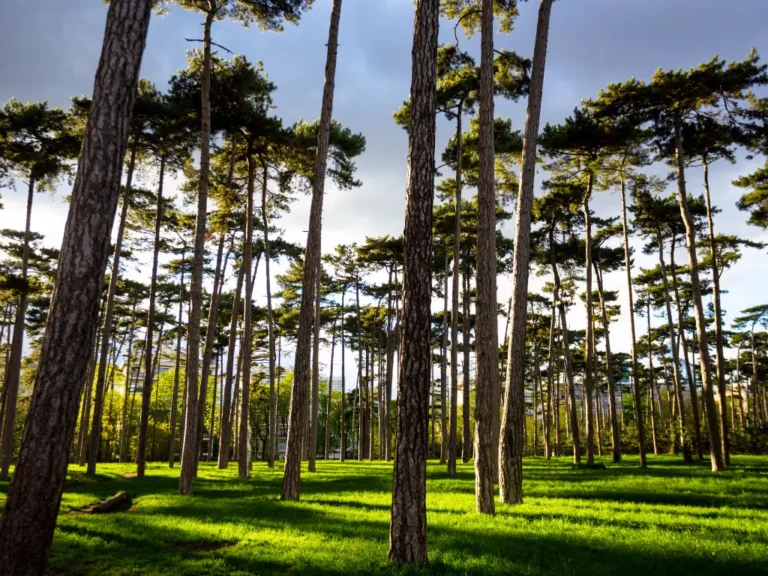Is Paris the City of Love or Lights?
Paris is famous for being the ‘City of Love’ and ‘City of Lights.’
But why?
When I visited Paris for a week, I experienced its touristy and non-touristy spots. I climbed the Eiffel Tower, saw the Mona Lisa in the Louvre, walked along the Seine, and even visited their largest Mosque!
Sparkling lights flood the city at night. Love (or at least romance) is in the air. I understood why.
What I didn’t realize was that there is a deeper and even tragic history behind these famous titles.
In this guide, we will dive deeper into the question ‘Is Paris the city of love or lights?‘ and discover the romance, radiance, and even darker aspects that gave the city its two iconic titles.

Is Paris the city of love or lights?
Both. Paris is known as the City of Love and the City of Lights.
Paris is called the ‘City of Love‘ because the city is filled with romantic sites, beautiful buildings, and cozy cafes. It’s one of the top destinations for couples worldwide.
It’s also known as the ‘City of Lights‘ because it was one of the first cities to have streetlights. It also lights up beautifully at night.
Back then, it was also a hub for smart and creative people.
Let me dive deeper into why love and light represent Paris perfectly!
Why is Paris called the City of Love?
La cité de l’amour. The ‘City of Love’ in French sounds even dreamier.
Aside from the language, though, there are countless reasons why couples and singles alike flood the city for a first-hand experience of romantic scenes fit for the big screen.
Romantic Landmarks
I stepped into Paris expecting to be disappointed. After all, many destinations aren’t always the way they seem online.
But I was humbled immediately. A change of heart in the City of Love, as I would call it.
We finally found and experienced it for ourselves — the natural charm of Paris’ famous romantic landmarks that everyone was raving about. And first on the list was Le Dame de Fer, the Iron Lady.
The Eiffel Tower had the most enchanting sunset view. We had to climb 674 steps to get to the top and it was all worth it (taking the stairs was also cheaper, with shorter lines!).
Exhaustion quickly melted away and was replaced with the thrill of seeing all of Paris beneath us.
We also strolled along the Wall of Love in Montmartre where ‘I love you’ was written in over 300 languages. It’s a spot where couples can celebrate their love inside a beautiful garden.

There are other romantic landmarks for those who prefer less touristy areas. Palais Galiera, Square Rapp, and Rue Berton with all their unique angles of the ever-beautiful Tour Eiffel.
Romantic Movies
Famous Hollywood movies and shows have made Paris almost like a thing from fairytales. It’s no wonder people have it on their bucket lists.
I can’t forget the romantic comedy, Midnight in Paris, which captured Paris’ allure in every frame. The movie has the best views of the city in the opening sequence, from the Pont Alexandre III to the Place de la Concorde.
We also can’t leave out the Pixar film Ratatouille, one of my favorites, which cemented French cuisine in the minds of children and adults worldwide.
Even the recent series Emily in Paris has brought out the special vibe of the city. From cozy coffee spots to trendy shops, every episode feels like a mini trip to Paris. Follow Emily’s footsteps in Paris here.
French Food and Fine Dining
And that brings us to the next reason why Paris is the city of love. They say that the way to one’s heart is through their stomach.
So what better way to say I love you than with French cuisine, one of the best in the world?
Walking around the bakeries and patisseries in Paris is a feast for the senses. I saw croissants, foie gras, red wine, and fromages (cheeses).
PRO TIP: Learn from top chefs in Paris and bring authentic French meals, breads, and desserts to your kitchen. Discover the best baking and cooking classes here.
But what gave me an authentic taste of Parisian food was Rue Cler, Paris’ most beautiful market street.
From macarons and croissants to chocolates, cheese, fresh veggies, and fruits, Rue Cler is Parisians’ go-to for everyday food.
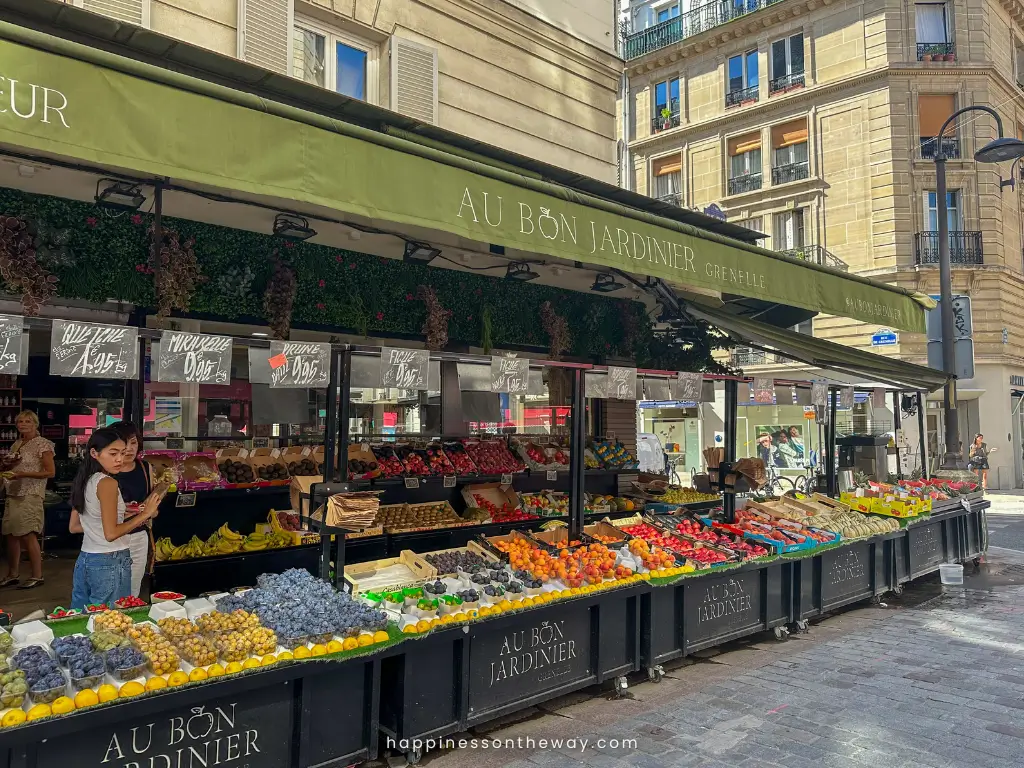
In this local market, I also found Amorino’s ice cream which was a cone of pure bliss topped with a macaron! It was, hands down, the best ice cream I’ve ever tasted.
All around Paris, there is no shortage of fine dining options for romantic dinners. Whether you’re looking for Michelin-starred cuisine, farm-to-table restaurants, cozy bistros, or a view of the Eiffel Tower, this city has it all.
Read Next:
The Best Affordable Michelin Star Restaurants in Paris
Where do Locals Eat in Paris? A Complete Guide
Parisian Picnic
Why is Paris the City of Love? Look how they savor life in general.
Parisians have a unique way of enjoying life, and one example of this is their love for picnics, or in their words, pique-nique. They often spend their free time relaxing in parks, sipping wine, and lounging on the grass.

I had the chance to experience this when we brought some fresh fruits, nuts, and croissants from Rue Cler and enjoyed them while sitting on the grass at Champ de Mars with a view of the Eiffel Tower.
And simple as it is, it was one of my favorite moments of the trip.
I highly recommend having a picnic in one of the parks in Paris. You can find these parks all over the city.
Just grab some croissants or baguettes from a nearby bakery, and your choice of drinks, and enjoy a nourishing meal.
But if you want to experience a complete Parisian picnic without setting it up yourself, you can have it arranged for you.
Wall of Love
Let’s talk more about Le Mur des Je t’aime. The wall of I-love-yous.
The Jehan Rictus Garden Square in Montmartre is home to this decades-old project. Its vision? A love that breaks barriers.
It was a surreal experience seeing this masterpiece. The artists’ passion for breaking language and cultural divides through art can be felt with every script seen on the wall.
My partner and I saw that the German (ich liebe dich) and Filipino (iniibig Kita) were near each other on the wall. We felt more matched for each other than ever.
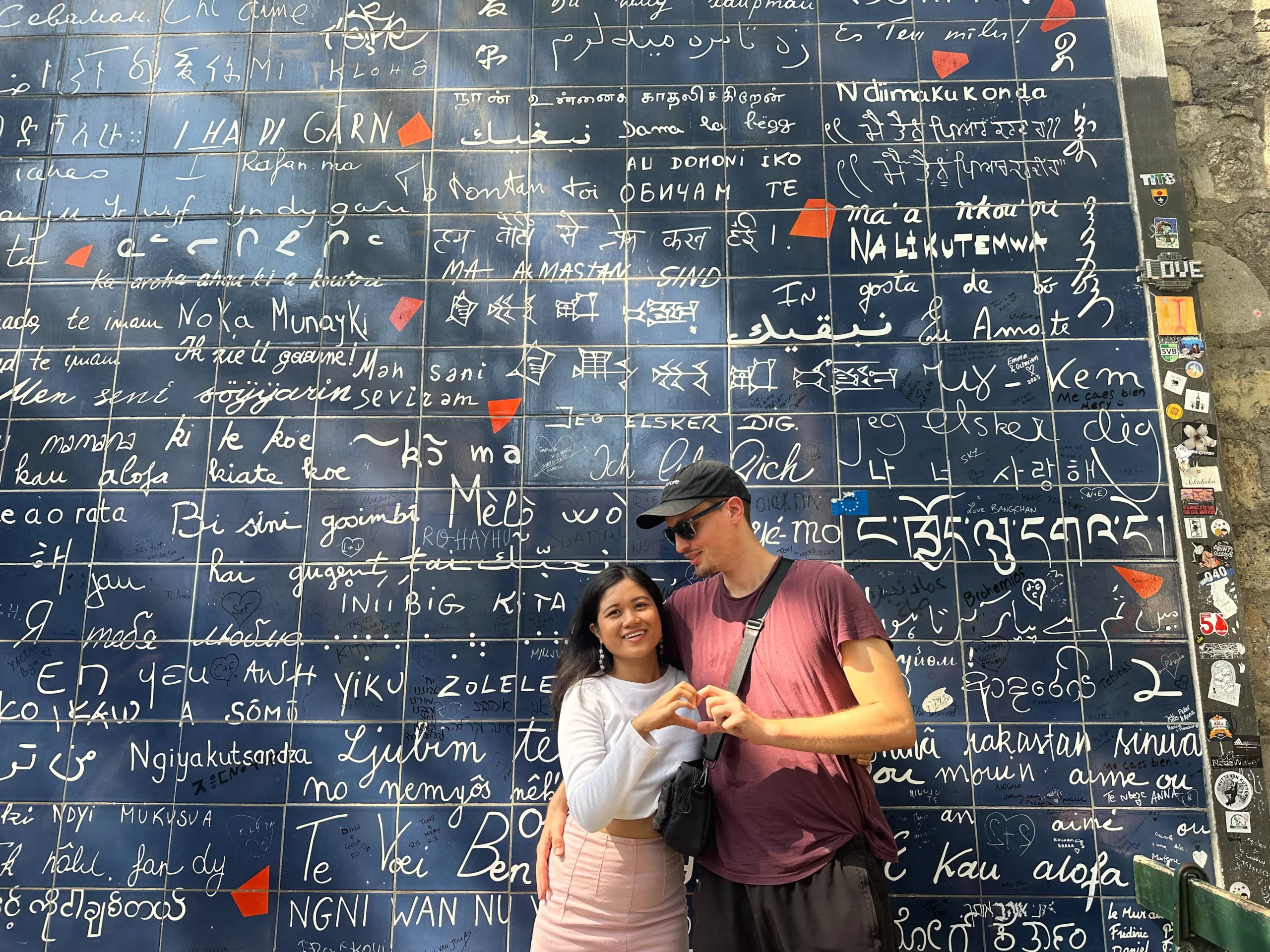
Museum of Love
Le Musée de la Vie Romantique (The Museum of Romantic Life) is right at the bottom of Montmartre and offers free access to long-term exhibits. Its small garden is one of the most underrated romantic spots in Paris.
The museum was previously the home of artist Ary Scheffer in the early 1900s and was turned into a museum of her life, paintings, and writings. It’s a peaceful escape from the noise of the city.
Subject for Love Paintings
Art imitates life. So many artists attempt to channel the one-of-a-kind atmosphere of Paris through a canvas.
Some famous examples are The Boulevard Montmartre at Night by Camille Pissarro in 1897 or the Evening, Porte Saint-Denis by Georges Stein in 1900.
Even today, many contemporary artists continue to use Paris as their muse.
Joie de vivre (Joy of Living)
The joie de vivre of the French shows in their love for leisure and vacations.
Even before coming to Paris, I had a glimpse of the joie de vivre while watching Emily in Paris.
I love the idea of not bringing work home, not working on weekends, and simply enjoying free time. The French believe we are meant to live to work, not work to live.
However, joie de vivre goes beyond work-life balance.
It’s also about appreciating life’s highs and lows, living in the moment, savoring every bite of food, and enjoying the simple things in life instead of waiting for the next big thing.
I’ve witnessed this firsthand. We walked around Paris and saw locals gather at cafes and restaurants to enjoy coffee or wine, without laptops or even phones in hand.
They are there to savor their coffee, catch up with friends, or simply unwind. We also saw many Parisians lounging in the parks, enjoying the outdoors (or life in general).
It’s something we can all learn from the French.
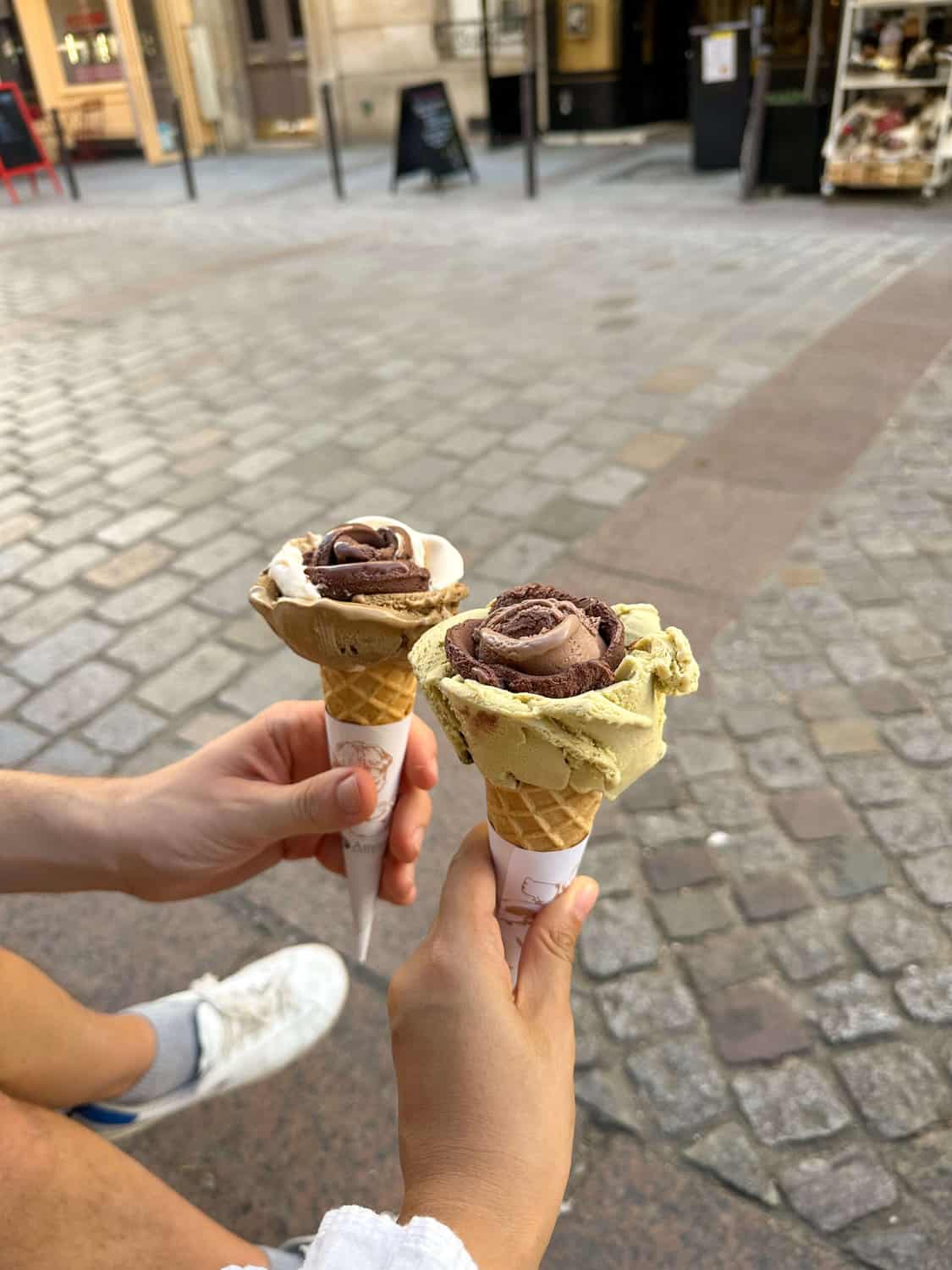
Proposals and Weddings in Paris
Paris is still a top choice for destination weddings, proposals, and honeymoons for people all over the world.
Many famous spots in the city even offer wedding packages because of the demand. You can even hire a private local photographer to document your trip to Paris!
We witnessed this ourselves. We saw one wedding shoot in Trocadéro while looking at the Eiffel Tower, and another in the Wall of Love within just 4 days!
French Is One of the Sexiest Languages in the World
Many would argue that French is the most romantic language in the world. Experts say that this is because of the breathy and rhythmic sound produced by the French’s many vowels and soft consonants.
Imagine hearing je t’aime. La vie en rose. Déja vu. All in that melodious French accent. Even better, why not learn the basic French phrases with a glass of champagne?
I’ve always teased my German partner about how his language sounds quite harsh and emotionless, while French was sweet and seductive. He never agrees with me. Don’t you?
Parisians are quite flirty
This is a first-hand account and you can quote me on this. I once dated a French guy. Yes, they’re flirty, sweet, and very romantic.
Picture this: Someone you’re dating cooks you some crêpes, brings you croissants and ice cream at home, and tops it all off with a sweet little note.
But to be fair, my German partner also does that!
Why is Paris called the City of Lights?
La Ville-Lumière — City of Lights in French. Paris is known as the City of Lights for multiple reasons.
I initially thought it was because of the city’s beautiful cityscape, monuments, and roads that are illuminated after sunset.
However, the nickname originated from a long history of safety efforts and anti-crime projects that date back to the 1600s.
Let me explain further.
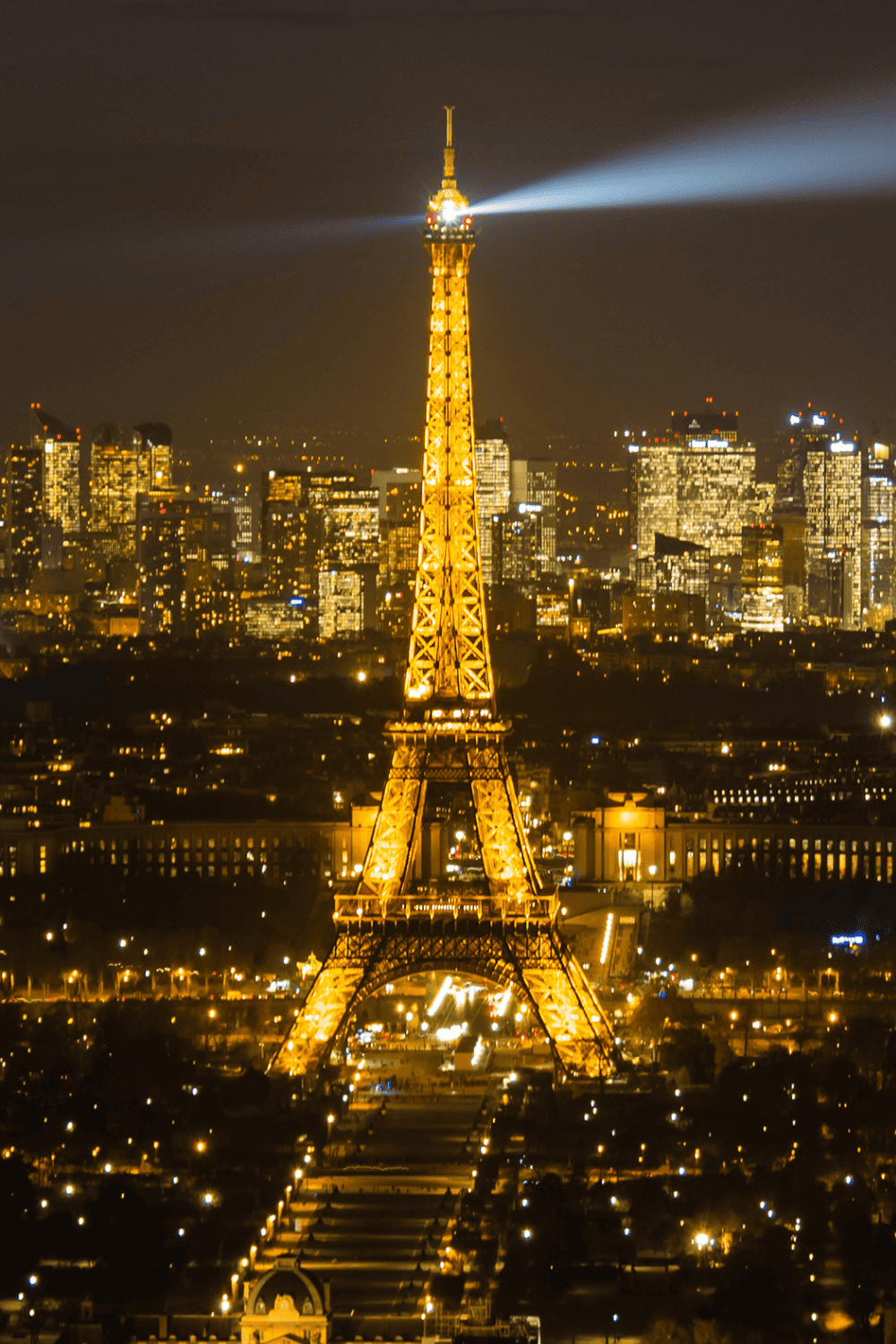
Lighting for Safety
The French capital doesn’t exactly have the best reputation. But one of the things they did well was installing lighting to increase safety in the capital in the 17th century.
Three thousand lanterns were placed all over Paris in 1667 to prevent criminals from doing their dirty business in the dark of the night.
And voila, crime rates dropped. People felt more safe. From then on, it was history. Paris became the City of Lights.
Lights at Night
But what kind of crime were they so afraid of? Well. Murder.
It’s hard to imagine one of today’s symbols of love as a murder capital. But in the 17th century, that’s what Paris was.
It was such a big problem that even figures of authority were not safe from bleeding out to death on the pavements of the city.
The city needed to employ more policemen, hire spies, and light up miles and miles of streets. And thankfully, it worked. Today, Paris boasts of 300 illuminated sites.

Lights surround famous monuments, national buildings, churches, hotels, and more. We can’t forget the 33 of the 37 bridges in the city that light up at nightfall.
Related: 25 Quiet Hotels in Paris for a Stress-Free Stay
What started as a safety effort turned the city straight out of a painting.
Pioneer in Street Lights
Paris followed through with being a pioneer of urban lighting in the 19th century. It was the first European city to use electric streetlights in 1878.
Today, 50,000 streetlights can be found guiding Parisians and travelers in Paris.
Walking at night is one of the best things to do in Paris. We enjoyed all the beautiful streets feeling secure. We felt safe even if we were still out at 11 PM in Nation, a less-touristy neighborhood.
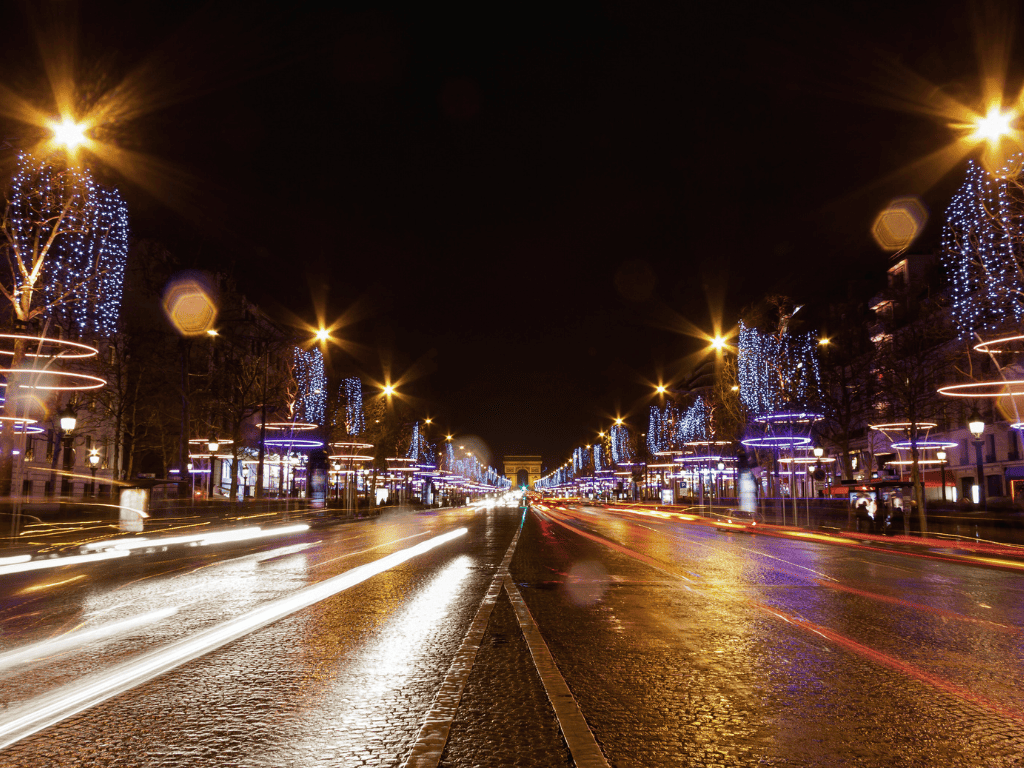
Age of Enlightenment
Renaissance. A French word that means rebirth.
It’s also another term for the Age of Enlightenment, a movement that started in France around the 15th-18th century.
This reinforced Paris’ ‘City of Light’ title. But in this context, light refers to new knowledge and understanding.
The Age of Enlightenment was a period of discovery. Science, art, and philosophy thrived during this time.
Many of the world’s famous artists, like da Vinci and Michelangelo, produced their work during this period.
The Eiffel Tower
Why is Paris called the City of Lights? The Eiffel Tower, lit up beautifully every evening, definitely contributes to the city’s charming title.
Every night, every hour, the Eiffel Tower comes alive with drops of golden light that sparkle for five minutes.
The majestic light show is a testament to the height of engineering in France. It takes 40 kilometers of strings of electrical light cords and 20,000 light bulbs to make this landmark glow.
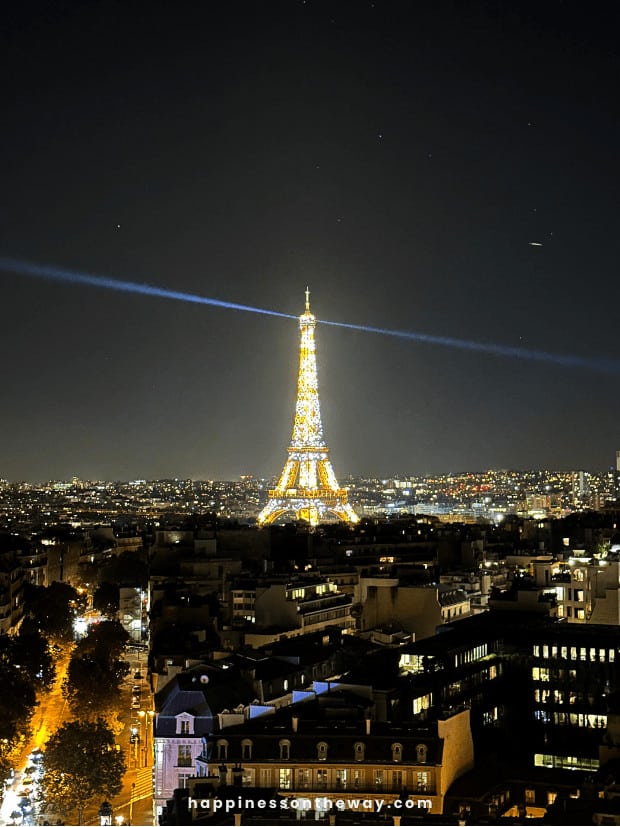
I saw this light show at the top of Arc de Triomphe while walking along the Seine and even in our backpackers’ hostel in Nation.
I also climbed the top of the tower and saw the monument sparkle in front of my eyes while touching the tower. It was pure magic.
Though the lighted Eiffel Tower is not the main reason why Paris is called City of Lights, it undoubtedly made me understand why.
Wrap-Up: Is Paris the City of Love or Lights?
Paris is the City of Love and Lights. I have yet to encounter a city that rivals Paris in its well-deserved titles with the city’s romance, way of life, language, lights, and history.
If like me, you’re a traveler who is skeptical of Paris, give the city a chance and it might just bewitch you. This guide on Paris’ hidden gems is a good start for you.
Read More Things To Do in Paris
- Where do Locals Eat in Paris? A Complete Guide
- Slow Travel Paris: How to See Paris Like a Local
- Our Perfect Picnic at the Eiffel Tower & How To Do It
- 15 Best Cooking and Baking Classes in Paris
- The Best Affordable Michelin Star Restaurants in Paris
- 19 of the Best French Bistros in Paris Locals Love
- Is Paris Overrated? Surprising Things I’ve Seen
- The 21 Most Eco-Friendly Hotels in Paris: Luxury to Budget
- 25 Quiet Hotels in Paris for a Stress-Free Stay
- 45 Best Views of the Eiffel Tower + Map to Find Them
- 23 Best Free Views in Paris (Plus 7 Secret Spots)
- 25+ Best-Kept Hidden Gems In Paris
- 15 Best Things to Do in Paris at Night: Insider Experiences
- Grand Trianon: The Ultimate Guide to Versailles’ Hidden Gem
- The Wall Of Love Paris: All You Need To Know
- Rue Cler: The Most Beautiful Market Street In Paris
- The Grand Mosque of Paris Ultimate Guide
- Rue Crémieux – The Most Beautiful Street in Paris
- 37 Best Day Trips from Paris by Train to Other Countries & France


